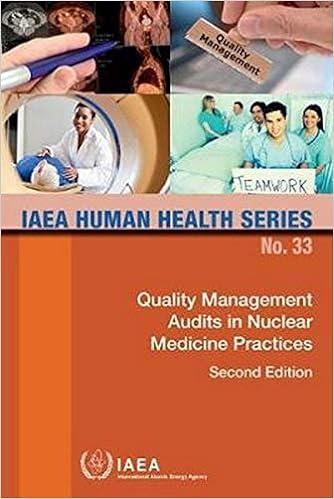





Weighted Average Perpetual: Goods Purchased Cost of Goods Sold Cost per Cost per Date # of units # of units sold Cost per Cost of Goods Sold unit Inventory Balance Inventory # of units unit Balance 660 @ $ 35.00 $ 23,100.00 unit Jan 1 = Feb 10 330 @ $ 32.00 660 @ 330 @ $ 35.00 = $ 32.00 $ 34.00] = $ 23,100.00 10,560.00 $ 33,660.00 Average 990 Mar 13 110 @ $ 20.00 990 @ 110 @ $ 34.00 $ 20.00 = $ 32.60 $ 33,660.00 2,200.00 $ 35,860.00 1,100 @ Mar 15 760 @ $ 32.60 $ 24,776.00 340 @ $ 32.60 = $ 11,084.00 Aug 21 180 @ $ 40.00 340 @ 180 $ 32.60 $ 40.00 $ 35.16) = $ 11,084.00 7,200.00 $ 18,284.00 Average 520 Sept 5 570 @ $36.00 @ $ 35.16 = $36.00 = $ 35.60 lolololo $ 18,283.20 20,520.00 $ 38,803.20 @ Sept 10 750 @ E $ 35. O @ $ 35.60] = $ 12,104.00 Totals Perpetual LIFO: Goods Purchased Inventory Balance # of Cost per Date Cost of Goods Sold # of units Cost per cost of Goods Sold sold unit Cost per # of units units unit unit Inventory Balance $ 23,100.00 Jan 1 660 @ $35.00 Feb 10 330 @ $ 32.00 660 @ $35.00 = $ 23,100.00 330 @ $ 32.00 = 10,560.00 $ 33,660.00 Mar 13 110 @ $ 20.00 660 @ $ 35.00 = $ 23,100.00 $32.00 = 330 @ 110 @ $ 20.00 = 10,560.00 2,200.00 $ 35,860.00 Mar 15 110 @ $ 35.00 $ 11,900.00 $ 20.00 $ 32.00 $35.00 340 @ 0 330 @ www @ $ 2,200.00 10,560.00 11,200.00 $ 23,960.00 320 = $ 11,900.00 Aug 21 180 @ $ 40.00 340 @ 180 @ $35.00 = $ 40.00 = $ 11,900.00 7,200.00 $ 19,100.00 Sept 5 570 @ $36.00 340 @ 180 @ 570 @ $35.00 = $ 40.00 = $36.00 = $ 11,900.00 7,200.00 20,520.00 $ 39,620.00 Sept 10 $35.00 = $ 11,900.00 570 @ 180 @ $36.00 $ 40.00 340 @ 0 = $ 20,520.00 7,200.00 27,720 $ 51,680.00 Totals $ 11,900.00 Perpetual FIFO: Goods Purchased # of units unit Cost per Cost of Goods Sold Cost per Cost of Goods Sold Date # of units sold Inventory Balance # of units Cost per Inventory unit Balance 660 @ $ 35.00 = $ 23,100.00 unit Jan 1 Feb 10 330 @ $ 32.00 660 @ $ 35.00 = $ 32.00 330 @ = $ 23,100.00 10,560.00 $ 33,660.00 Mar 13 110 @ $ 20.00 660 330 @ 110 @ $35.00 $ 32.00 = $ 20.00 = $ 23,100.00 10,560.00 2,200.00 $ 35,860.00 Mar 15 660 @ $ 35.00 $32.00 0 @ 230 @ $ 23,100.00 3,200.00 $ 26,300.00 $ 32.00 $ 20.00 = 100 @ = 4,600.00 $ 4,600.00 Aug 21 180 @ $ 40.00 230 @ 110 @ 180 @ $ 32.00 = $ 20.00 = $ 40.00 = $ 7,360.00 2,200.00 7,200.00 $ 16,760.00 Sept 5 570 @ $36.00 230 @ 110 @ 180 @ 570 @ $ 32.00 = $ 20.00 = $ 40.00 = $36.00 = $ 7,360.00 2,200.00 7,200.00 20,520.00 $ 37,280.00 Sept 10 0 230 @ 110 @ 180 @ 230 @ $ 32.00 $ 20.00 $ 40.00 $36.00 $ 7,360.00 2,200.00 7,200.00 8,280.00 $ 25,040.00 = = 340 @ $36.00 = 12,240.00 $ 12.240.00 Problem 6-3A Perpetual: Alternative cost flows LO P1 Montoure Company uses a perpetual inventory system. It entered into the following calendar-year purchases Units Sold at Retail Units Acquired at Cost 660 units @ $35 per unit 330 units @ $32 per unit 110 units @ $20 per unit Date Activities Jan. 1 Beginning inventory Feb. 10 Purchase Mar. 13 Purchase Mar. 15 Sales Aug. 21 Purchase Sept. 5 Purchase Sept. 10 Sales Totals 760 units @ $75 per unit 180 units @ $40 per unit 570 units @ $36 per unit 750 units @ $75 per unit 1,510 units 1,850 units Perpetual FIFO Perpetual LIFO Weighted Average Specific Id Specific Identification Cost of Goods Available for Sale Cost of Goods Sold Ending Inventory Cost per # of units Cost of Goods Available for Sale # of units sold Cost per unit Cost of Goods Sold # of units in ending inventory Cost per unit Ending Inventory unit 660 $ 35.00 $ 27,000 0 $ 35.00 $ 0 Beginning inventory Purchases: Feb 10 330 $ 32.00 230 $ 32.00 7,360 100 $ 32.00 3,200 March 13 110 $ 20.00 0 $ 20.00 0 180 $ 40.00 16,800 5,400 5,000 23,000 $ 77,200 0 $ 40.00 Aug 21 Sep 5 0 570 $ 36.00 0 $ 36.00 0 Total 1,850 230 $ 7,360 100 $ 3,200 4. Compute gross profit earned by the company for each of the four costing methods. (Round your average cost per unit to 2 decimal places.) FIFO LIFO Weighted Average Specific Identification Sales Less: Cost of goods sold Gross profit $ 0 $ 0 $ 0 $ 5. The company's manager earns a bonus based on a percent of gross profit. Which method of inventory costing produces the highest bonus for the manager? OLIFO FIFO Specific Identification Weighted Average












